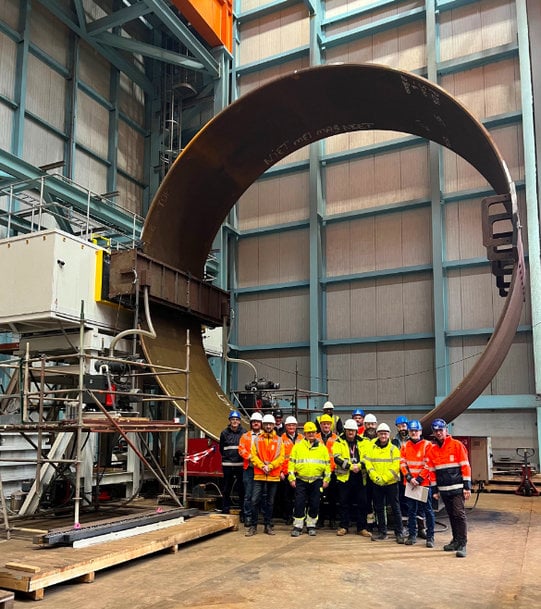www.industryemea.com
12
'23
Written on Modified on
Electron beam welding of wind turbine monopile achieved dramatic results
Cambridge Vacuum Engineering, SSE Renewables, Sif Group, and TWI have developed the first-ever electron beam welded section for an offshore wind turbine monopile foundation, to be installed in the second phase of Dogger Bank Wind Farm.

Monopiles are currently fabricated using conventional techniques such as submerged arc welding (SAW), but the consortium has demonstrated that electron beam (EB) welding is significantly quicker, cheaper, cleaner, more energy efficient and produces high quality welds with excellent fatigue properties.
The type of electron beam welding technology used called EbflowTM, is an innovative development within the electron beam welding industry. Instead of welding inside a costly and size-limiting vacuum chamber, Ebflow uses a local vacuum system that creates and maintains a vacuum around only the seam that is being welded. This technique unleashes the potential to use EB welding on large structures, such as the biggest monopiles, while reducing costs and enhancing productivity. The technology developed by CVE, has been shown to weld monopiles at least 25 times faster than current methods, whilst using 90% less energy, costing 88% less, and producing 97% less CO2 emissions than SAW methods.
The project required installation of an Ebflow system at Sif’s Maasvlakte 2 facility in Rotterdam to perform several longitudinal welds on 2750 mm length seams on 8m diameter rolled cans with a wall thickness of between 67-85mm. Qualification of the welding machine, weld procedures and operators were witnessed by third party inspectors and the regulatory body, DNV, which subsequently issued a technology qualification for EB welding and non-destructive testing (NDT) of the longitudinal seams produced with the process. The comprehensive performance testing programme proved that Ebflow produces welds with fatigue strength that is at least as good, if not better, than observed in equivalent arc welded joints.
The resulting can was incorporated into a monopile transition piece in January 2023 and is scheduled to be installed offshore as part of a foundation in Dogger Bank Wind Farm in late 2023. Dogger Bank Wind Farm is a joint venture between SSE Renewables, Equinor and Vårgrønn. The farm is being built in three 1.2GW phases and is expected to start generating power this summer.
www.camvaceng.com

